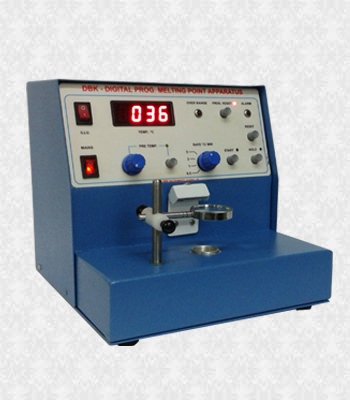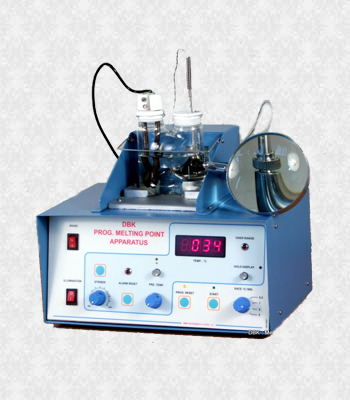- Call Us
+91 - 7972068414 / 9819877192
- Send Mail
response@shantaengineering.com
Melting Point for Chemicals & Plastics
Melting Point Apparatus for Plastics



Shanta Engineering is one of the Manufacturer of Material Testing Equipment, Hot Air Oven, Hardness Tester, Laboratory Hot Plates, Tensile Testing Machine, Laboratory Apparatus, Laboratory Equipments, Plastic Testing Equipments, Rubber Testing Equipments, Cable Testing Equipments, Metal Teasing Equipments, Inhouse Developed Machines, Cold Chamber, Halogen Gas Evolution, Limiting Oxygen Index, Apparatus, Constant Temperature Oil Bath, Melting point Apparatus For Plastic, Flammeablity Test as Per IS - 10810, Creep Tester, Shore Hardness Tester (Durometer).
Melting Point Apparatus for Plastics.
A Melting Point Apparatus for plastics is a laboratory device used to determine the softening or melting temperature of plastic materials. Unlike crystalline substances (like pure chemicals) that have a sharp melting point, plastics—being mostly amorphous or semi-crystalline—generally have a melting range or a softening point. Melting Point Apparatus for Plastics is a thermal testing instrument. It heats the plastic sample in a controlled manner. The temperature at which the plastic starts to deform, flow, or lose its shape is recorded as its melting/softening point.
Features of Melting Point Apparatus for Plastics.
Here are the key features of a Melting Point Apparatus for Plastics, typically used in laboratories to determine the softening or melting point of plastic materials:
- ❖ Temperature Range & Control : Wide temperature range (commonly up to 400°C or higher). Precise temperature control with ±0.1°C accuracy. Digital or microprocessor-based control system.
- ❖ Heating System : Rapid and uniform heating using embedded heaters or metal block systems . Step-wise heating for accurate observation of melting behavior
- ❖ Display System : Digital LCD/LED display for real-time temperature readout. Some models include touchscreen interface.
- ❖ Sample Viewing : Magnifying lens or built-in microscope. LED or halogen illumination for clear observation of melting
- ❖ Sample Holder: Capillary tubes or flat sample holders depending on the plastic type . Multiple sample testing (2–3 samples at once) for comparative analysis
- ❖ Automation & Data Logging : Automated detection of melting point in advanced models . Connectivity options like USB or printer for data export/logging
- ❖ Safety Features : Over-temperature protection. Insulated heating chamber. Alarm system for completion or fault. Calibration & Compliance. Factory-calibrated with options for user calibration. Conforms to international standards (ASTM D2117, ISO 306, etc.)
- ❖ Build & Portability : Compact bench-top design .Sturdy body with corrosion-resistant materials
Uses of Melting Point Apparatus for Plastics:
The Melting Point Apparatus is an essential laboratory instrument used to determine the melting point of substances, including plastics. In the context of plastics, the apparatus helps assess the thermal behavior and purity of polymer materials.
- ❖ Identification of Plastics: Different plastics have characteristic melting points. The apparatus helps in identifying an unknown plastic sample by comparing its melting point with known values.
- ❖ Quality Control: In plastic manufacturing industries, the melting point is a critical parameter. Regular testing ensures that the material meets specification and maintains consistency in product quality.
- ❖ Purity Analysis: Pure plastics melt at a sharp and defined temperature. A wider or lower melting range may indicate the presence of impurities, fillers, or blending with other polymers.
- ❖ Thermal Behavior Study: It helps study how a plastic material behaves when heated — whether it melts gradually or suddenly useful in understanding its thermal properties.
- ❖ Polymer Research and Development: In R&D labs, the apparatus is used to study the thermal transition points (like melting temperature (Tm) or softening point) of newly developed plastic materials.
- ❖ Material Selection: Knowing the melting point helps engineers select suitable plastics for applications that must withstand specific temperature ranges.
- ❖ Compliance and Certification: It is used to verify that the plastic material complies with international standards such as ASTM, ISO, or BIS for product safety and performance.
- ❖ Comparative Analysis: Used to compare batches or sources of plastic to ensure that replacements or new suppliers provide materials of the same thermal characteristics.




